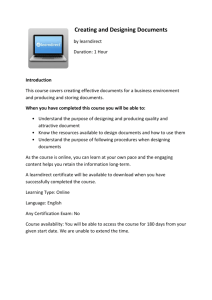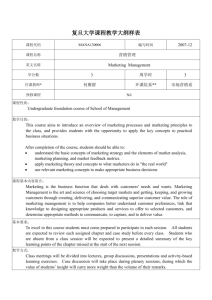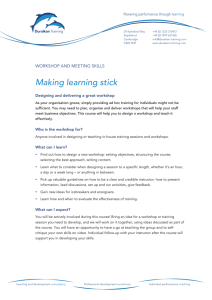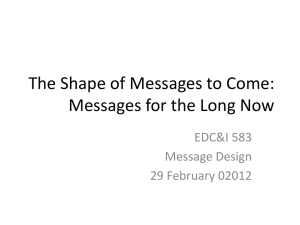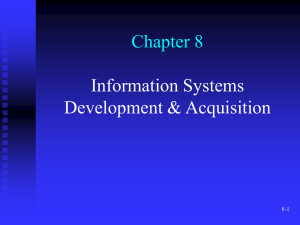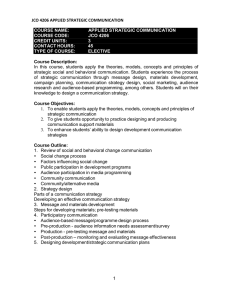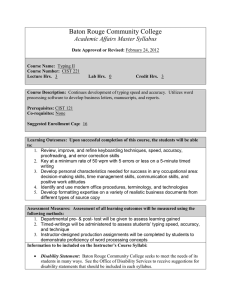Week 10 – Notes - Temple Fox MIS
advertisement
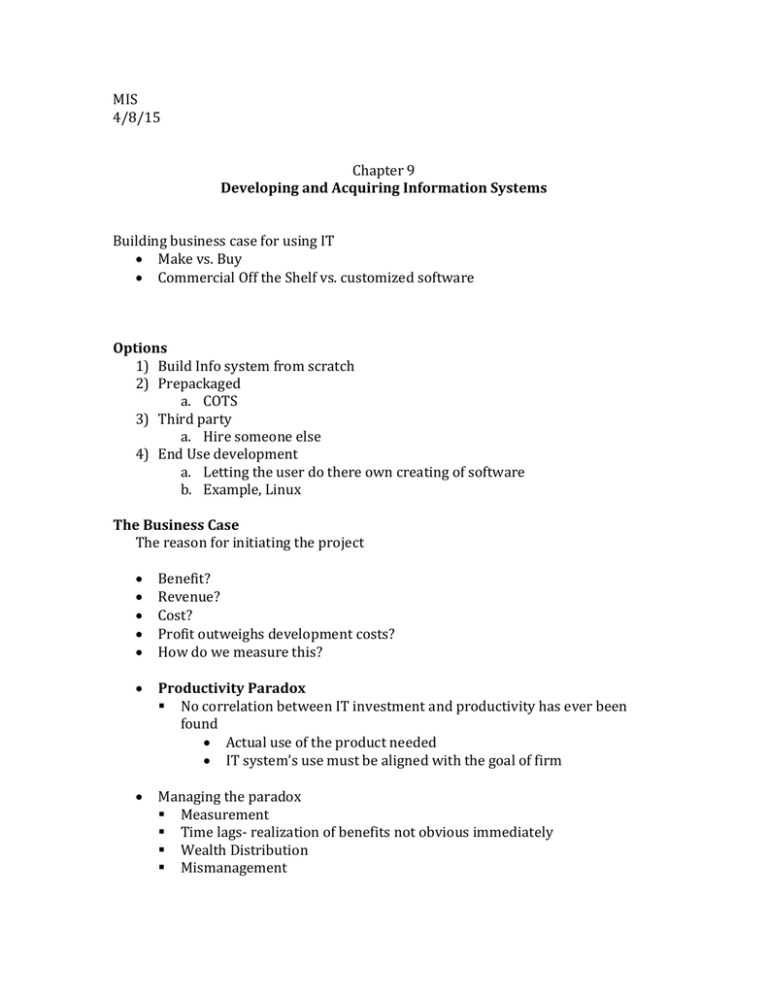
MIS 4/8/15 Chapter 9 Developing and Acquiring Information Systems Building business case for using IT Make vs. Buy Commercial Off the Shelf vs. customized software Options 1) Build Info system from scratch 2) Prepackaged a. COTS 3) Third party a. Hire someone else 4) End Use development a. Letting the user do there own creating of software b. Example, Linux The Business Case The reason for initiating the project Benefit? Revenue? Cost? Profit outweighs development costs? How do we measure this? Productivity Paradox No correlation between IT investment and productivity has ever been found Actual use of the product needed IT system’s use must be aligned with the goal of firm Managing the paradox Measurement Time lags- realization of benefits not obvious immediately Wealth Distribution Mismanagement Productivity business case- Cost vs Productivity Must either reduce costs, or increase productivity 1) Faith Argument based on belief 2) Fear “if we don’t do this, competitors will beat us” 3) Fact Based on data Need cost/benefit analysis Faith and Fear can be good to use in business, but works best when Facts are used in addition. Steps in Process 1) System Identification Pre-planning, planning 2) Systems Analysis Figure out what the system does Figure out system requirements Model organizational data- figure our flow of data Model organization processes and logics 3) System Design Designing forms and reports Designing interfaces and dialogues. Database, Files Designing Processes 4) System Implementation Testing Developmental- Test Correctness- Done by programmers Alpha Testing – test overall system- Software tester Beta testing- has actual users test capabilities System Conversion Parallel o Run old and new systems with an overlap o Safe but can be expensive, can be hard to manage Direct o End old, immediately start up the new o Can be risky if there are errors, can cost in lost revenue Phased o Bring new system in steps o Seen often Pilot o Use in only one location to root out issues before full adoption o Used often Success Factors o Top Management Buy-In o Firm makes more money o Perceived Ease of Use o Perceived Usefulness System Maintenance Software Development Life Cycle (SDLC) A Circle Planning-Analysis-Design-Implementation-Acceptance-Maintenanceagain Why not build own system Unless that is what your business does, someone else must do it better External Acquisition o Competitive bid Process Request for Proposal(RFP) Summary of existing system Performance and feature needs Reliability and service requirements Evaluation criteria Timetable Budget o Proposal Evaluation Benchmarking Standardized tests to compare different proposed systems o Vendor Selection Rank systems, often multiple systems will meet criteria Determine the best fit Application Service Provider (ASP) (provide SAAS, Software as Service) Bring in when facing problems Managing software is complex task High operating costs Scalability issues Outsourcing Systems Development Hire someone external to company- have them do the IS They can house the IS solution, on their computers Why Outsource Cost & Quality concerns High quality at lower cost available elsewhere Need more performance Supplier Pressure Simplifying, downsizing, reengineering Focus on core competency, have someone else do IS solutions Managing the IS outsourcing Relationship Need management of alliance Need active staff, good CIO Realistic performance measures Multiple levels of interface Full time relationship manager should be assigned



